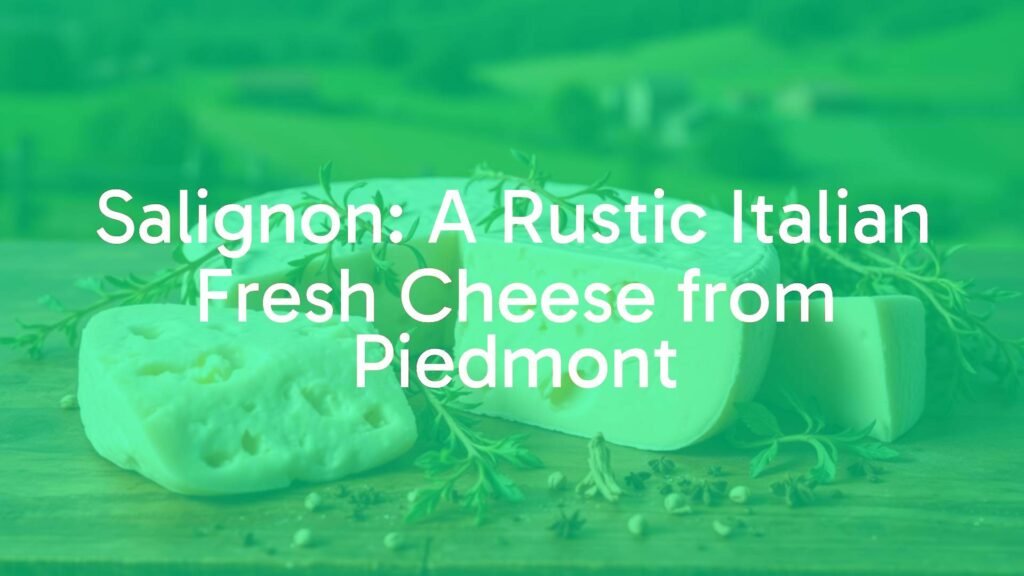An Introduction to Salignon
Salignon is a traditional Italian cheese that hails from the Piedmont region, nestled in the country’s northwest. This artisanal fresh cheese, frequently made within family-run dairies and Alpine farmhouses, is celebrated for its delicate flavor and rustic heritage. Unique among Italian cheeses, Salignon embodies regional traditions, distinctive dairy techniques, and reflects the lush alpine pastures of its origins.
Distinctive Traits and Production
Salignon is typically crafted from cow’s milk, though some variations incorporate goat’s or sheep’s milk, influenced by local practices and seasonal availability. The cheese is known for its creamy, spreadable consistency and pale white color. Freshly made, it boasts a soft, moist texture with a subtle, tangy flavor. On occasion, Salignon is enhanced with herbs, spices, or chili flakes, highlighting the creativity of Piedmontese cheesemakers and reflecting the tastes of different valleys. Traditional Salignon is unripened, meant to be enjoyed while still young and sweet, although some versions are lightly aged for a firmer, more developed character.
Historical Roots and Culinary Heritage
The roots of Salignon trace back centuries in the Piedmont Alps, where small-scale farming was a way of life. In times past, milk that couldn’t be preserved for longer periods was turned into cheeses such as Salignon, ensuring that nothing went to waste. Cheese-making in this region was an essential rural craft, tying families to their land and animals. Today, Salignon remains largely a product of local knowledge, rarely encountered outside its native region except in specialty Italian delicatessens.
Traditional Enjoyment and Pairings
Salignon’s creamy and mild qualities make it especially versatile at the table. It is most often savored spread on crusty bread or grissini, perhaps with a drizzle of mountain honey or a scattering of aromatic herbs. In local traditions, Salignon is eaten alongside cured meats, roasted vegetables, or as a component of antipasti platters. In some households, the cheese is mixed with a hint of garlic, chili, or even anchovy to create more robust, savory notes. With its Alpine character, Salignon naturally pairs with young, fresh wines of the region, such as Dolcetto or a light-bodied Barbera.
Cultural Importance in Piedmont
Though not as widely recognized as some other Italian cheeses, Salignon holds a cherished place in the culinary culture of the Cuneo and Torino provinces. For local communities, it is a cheese bound to seasonal rhythms and communal gatherings, often associated with celebrations marking the end of summer grazing or family feasts. Its simplicity and emphasis on locally-sourced milk reinforce the close link between food and land characteristic of Piedmontese gastronomy.
Serving Advice and Contemporary Appreciation
Salignon is best enjoyed fresh, and should be kept refrigerated until shortly before serving. Allowing it to warm slightly at room temperature will unlock its full flavor and spreadability. For a classic experience, serve Salignon unadorned with rustic bread, or experiment with mountain herbs and local honeys for more contemporary variations. As interest in regional and artisanal cheeses grows, Salignon continues to captivate those in search of authentic, lesser-known tastes from Italy’s dairy heartlands.

